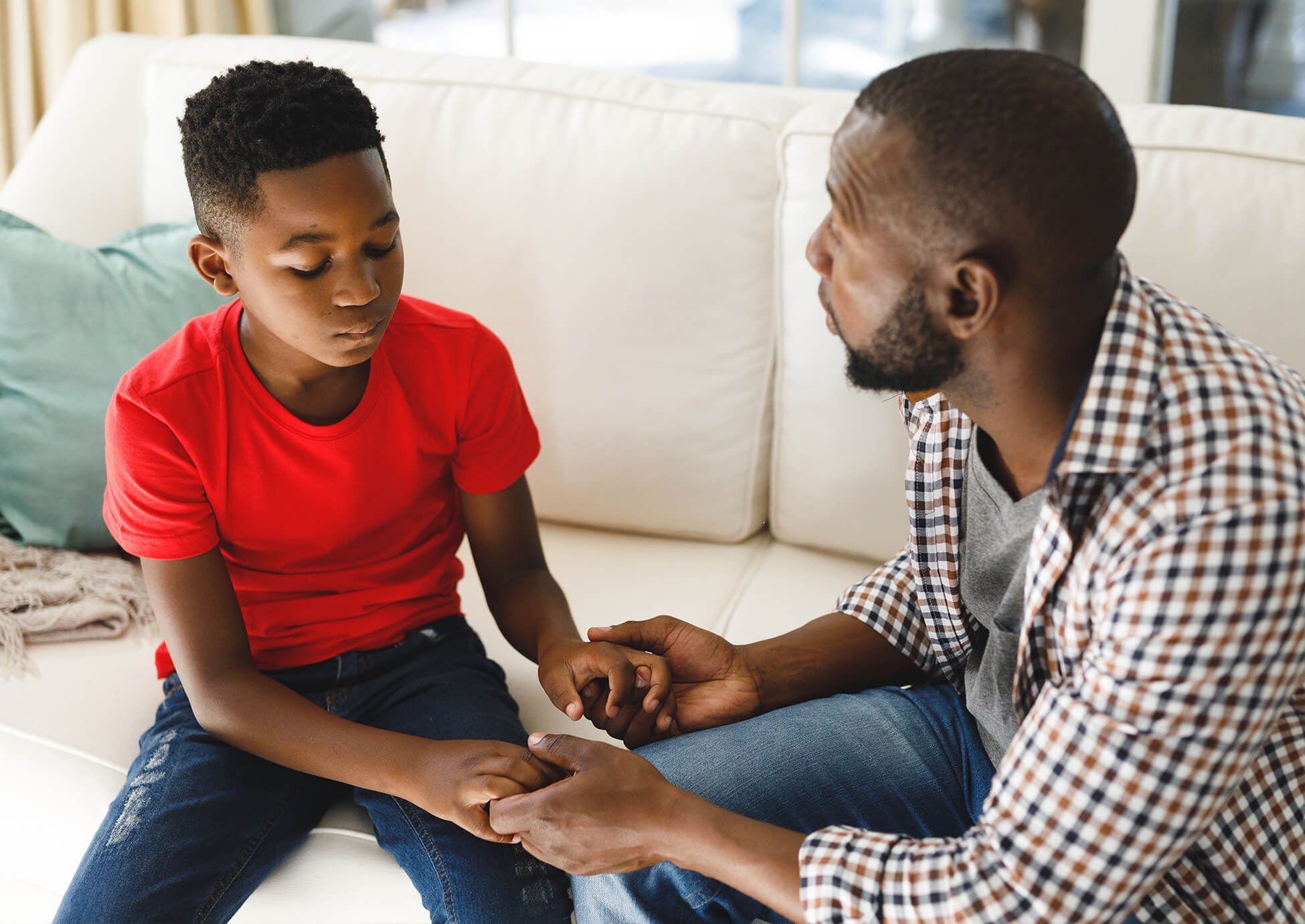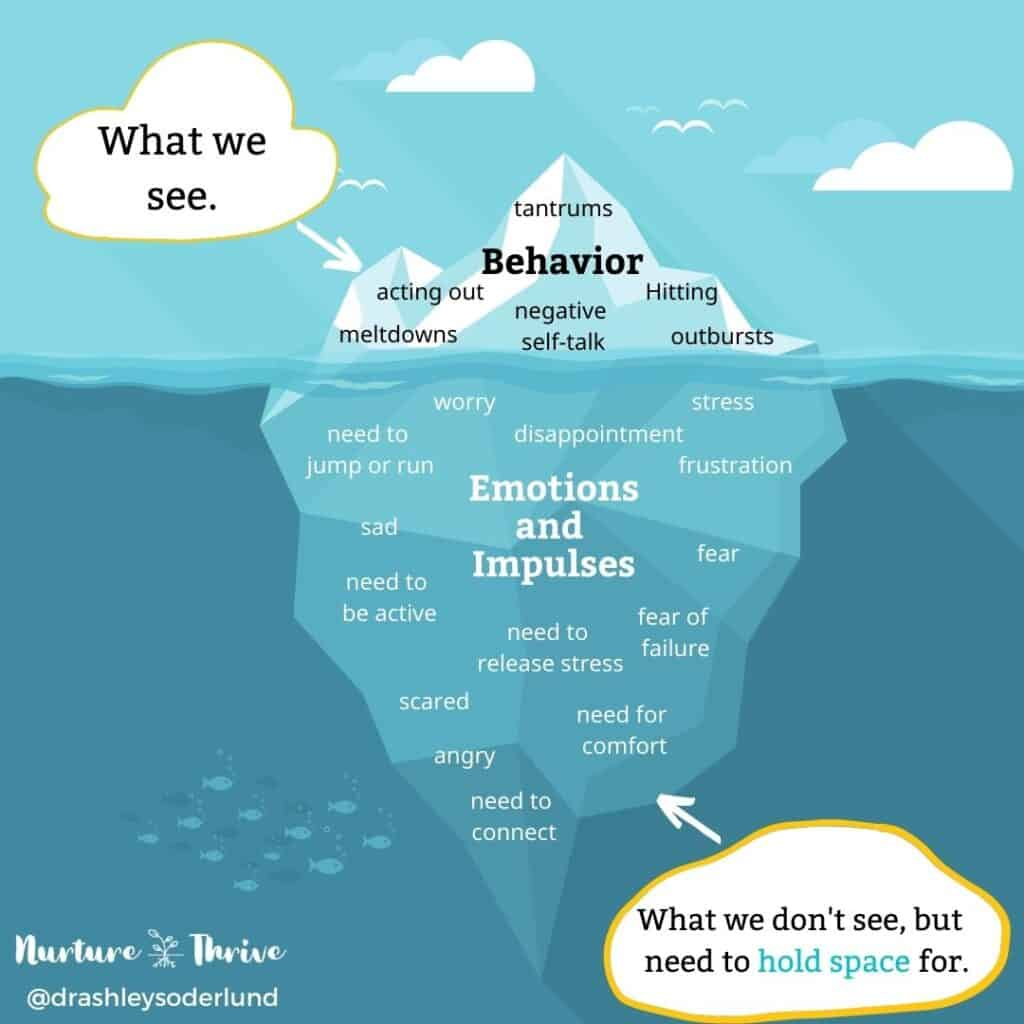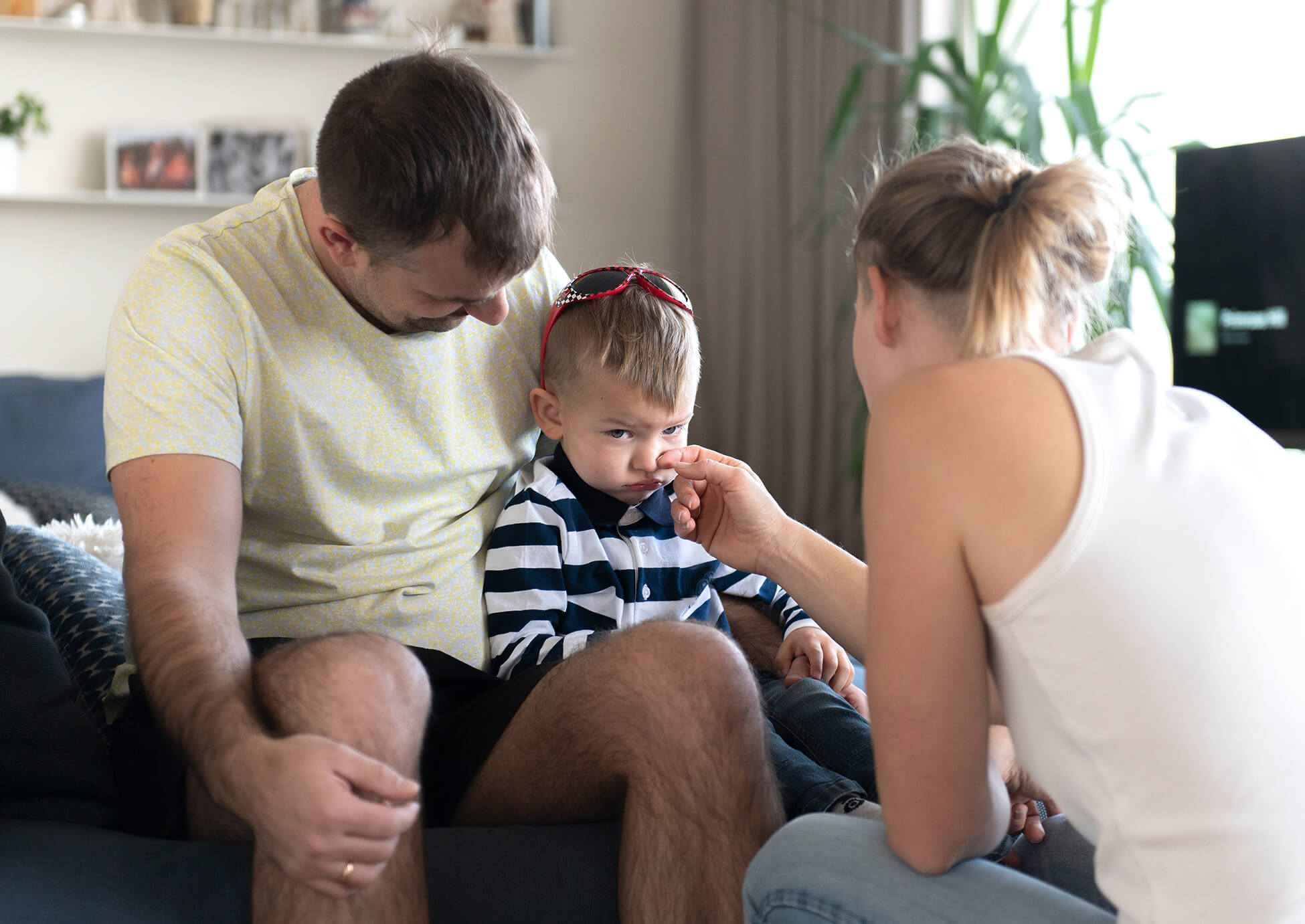Why Saying “Calm-Down” or “Don’t Cry” to Your Child Backfires
When our children are upset or angry, often our first impulse is to try to get them to calm down and to get their emotions under control. As a culture, we have learned to be uncomfortable with “irrational” emotions. We say things to our children like “don’t cry,” “stop crying,” or “calm down” in the hopes that our children will calm down and feel better.

DR. ASHLEY SODERLUND
Nurture and Thrive
When your child is upset, telling them to “calm down” or “don’t cry” won’t make them feel better. In fact, it can make your child feel worse because they don’t fully understand their emotions, and developmentally they have limited ability to be able to physically and cognitively calm down.
Saying “calm down” or “stop crying” could also have the opposite effect, and some children will cry harder or scream louder in an effort to communicate their feelings. Emotions can overwhelm everyone, especially children, and tears and tantrums are their way of asking for help. When children feel dismissed by their loved ones in these moments, one reaction could be to escalate their emotions.
Over time, saying phrases like stop crying and calm down can lead to kids suppressing their emotions and no longer showing outward expression of emotions. Emotional suppression has been linked to many poor outcomes, such as behavior problems, anger dysregulation, anxiety, depression, stress-related illness, and substance abuse (Greater Good).
Instead of making our child feel better, saying “calm down” or “stop crying” to our children backfires. Although it is not intentional, these phrases invalidate children’s feelings, and they end up escalating or hiding emotions instead of learning to accept and manage them in adaptive and healthy ways.

DR. ASHLEY SODERLUND
Nurture and Thrive
Ashley is a mom and a child psychologist who spent over 15 years studying children’s emotional development in the academic world. On her website, Nurture and Thrive she shares sciece-backed tips and tools so you can thrive as a parent.
Ashley believes that good parenting is a combination of instincts and learning. Knowledge can help you trust the instincts you already have and give you a new perspective that helps you understand your child’s behavior in a new light. Ashley helps you find the tools and knowledge to raise children with big hearts and strong minds.
Learn more at Nurture & Thrive
The Science: Emotions and Parenting
When parents dismiss their children’s emotions, their children show more behavior problems and poorer emotion regulation (Lunkenheimeret al., 2019). On the other hand, when parents communicate understanding and acceptance of their children’s emotions, their children show better emotion regulation and fewer behavior problems over time (Havinghurst et al., 2010).
Parents often think being a “good” parent means being calm and not showing negative emotions. However, this is not good for either your own emotional well-being nor your child’s.
In one study, parents were asked to mask or hide their emotions after a stressful event. When reunited with their children, the researchers found that children “catch” their parent’s stress only when they were hiding their stress. When they openly admitted they had experienced a stressful situation, there was no “stress contagion” (Waters et al., 2020).
Parents have good intentions when they are trying to handle their own emotions and their children’s emotions, but suppressing and controlling emotions isn’t the answer.




What do you do instead?
Start with accepting emotions!
Emotions themselves are not bad. Even our “negative” emotions exist for a reason. For example, anger and frustration can help us push through a problem, and sadness can help us know what we truly care about.
When a child is told to “stop crying” or “calm down,” they are getting the message that their parent is uncomfortable with their pain and that when they are mad or sad, they are not accepted. This teaches children that emotions themselves are a threat.
On the other hand, when a child is upset and a parent asks, “would you like a hug,” they don’t learn that emotions are a threat but rather are something to work through. They no longer need to escalate that emotion to get the connection or understanding they seek or suppress it because they have learned that emotions are bad.
Parent Mindshift: Emotions are neither bad nor good. Emotions are energy in your body that you can use to push forward and try to do something hard or to reach out and connect with someone. Emotions are useful.
Separate Emotions from Behavior
When our kids impulsively act on their emotions, we instantly hone in on what they are doing wrong. We mistakenly equate their behavior to their emotion. This can give our kids the message that how they feel is wrong, making them feel worse and more likely to either internalize or lash out. Over time, this becomes a vicious cycle.
What we need to do is separate the behavior from the emotion. Feeling hurt, frustrated, angry, or upset because your friend took your toy away isn’t bad — it is entirely appropriate to feel those things. But the behavior of hitting your friend over the head with another toy isn’t the best way to express those feelings. You can correct the behavior while still accepting the emotion.
Next time you see your child acting out or having an outburst, look beyond the behavior and become aware of how your child is feeling. You don’t have to know exactly how they feel – understanding that they are upset is enough.
Let your child know that you see and understand that they are upset. When you become consistent with this, many behaviors that your child was doing to communicate their emotion will no longer be necessary, resulting in fewer emotional outbursts and more emotion regulation.
The messy moments when your child is expressing emotions are the perfect time to connect and teach your child. We often think other parents out there are getting it right all the time in their perfectly calm worlds. In reality, the messiest and most emotional moments, the uncomfortable moments, are exactly where children learn to thrive. When we react with acceptance and validation in those messy moments, that is when children learn the most.
Parent Mindshift: All behavior is communication. Look beyond your child’s behavior to see the underlying emotional need. You can set limits on behavior while validating emotion.
What to Say Instead of Calm-Down or Don’t Cry
To the Young Toddler:
Would you like a hug?
It is okay to feel upset; let’s sit here together while you cry. It is okay to cry.
Those are big feelings. I have big feelings too. We all do. Can you pretend to blow out this candle (hold up your finger and have your finger fall down and pop back up a few times to get some deep breathing started).
To the Preschooler:
Would you like a hug?
I can see you are upset. I’m here. Let’s do some big dragon-sized breaths together.
It’s not okay to push on the playground. Come sit on this bench with me, and I will stay with you while you feel frustrated.




To the School-Aged Child:
Would you like a hug?
That sounds hard. I’m here.
You sound upset, and sometimes we say things like “I’m stupid” when upset. It’s okay to feel upset. I will sit with you, and we can look at this together.
To the Tween/ Teen:
Would you like a hug?
What do you need? Distraction, comfort or space?
If you want some space, I can do that. I will check on you in a few minutes. I can also stay even though you have a lot of emotions. I am not scared away. I am okay to sit here and be with you while you feel all this.
Parent Mindshift: No matter your child’s age, all they want is love and acceptance. Especially when they are at their worst emotionally and may even feel unloveable, those moments are the most important to show you can sit with their feelings so that they will learn to be able to sit with their feelings too.
More phrases to say: https://nurtureandthriveblog.com/emotion-coaching-parents/
Printable Resource:



-
DR. ASHLEY SODERLUND
Nurture and Thrive
Ashley is a mom and a child psychologist who spent over 15 years studying children’s emotional development in the academic world. On her website, Nurture and Thrive she shares sciece-backed tips and tools so you can thrive as a parent.
Ashley believes that good parenting is a combination of instincts and learning. Knowledge can help you trust the instincts you already have and give you a new perspective that helps you understand your child’s behavior in a new light. Ashley helps you find the tools and knowledge to raise children with big hearts and strong minds.
Learn more at Nurture & Thrive
Resources like these are provided by American SPCC – a national nonprofit dedicated to building positive childhoods for all children by empowering parents and caregivers with research-backed education and support.
This work is made possible by passionate donors and community advocates. Learn how you can get involved and support the mission here.
Previous Section
